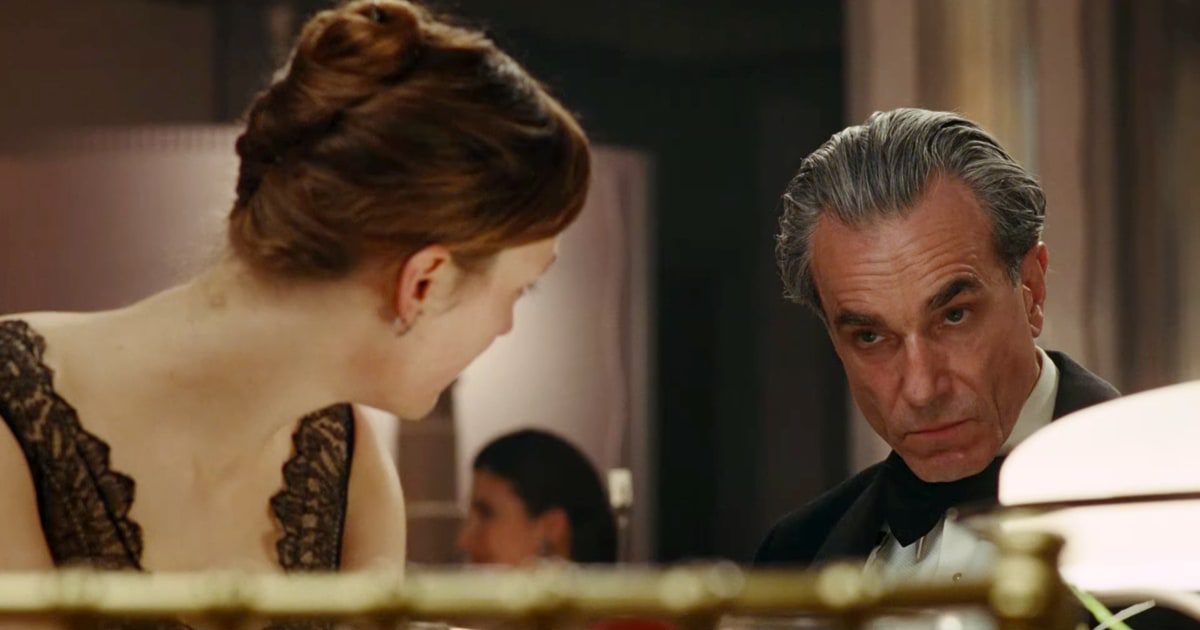Phantom Thread, Paul Thomas Anderson’s eighth film, is so far removed stylistically from his previous work that it’s hard to reconcile. It has none of the Altmanesque trappings of Magnolia or Boogie Nights, nor the epic sweep of There Will Be Blood. It’s small-scale in a way not seen since his debut feature Hard Eight. It’s also incredibly personal, and feels downright confessional at times. Does ambition eclipse love, the film asks, or is it the other way around? Can the two coexist?
Daniel Day-Lewis, in his final role, plays Reynolds Woodcock, an in-demand dress designer on the London fashion scene in the 1950s. Through the setup, and the character, Anderson holds back on decadence and extravagance. This is the most restrained that Anderson and Day-Lewis have been in some time. The latter, one of the all-time great screamers in film, only raises his voice once or twice. Reynolds is a prickly perfectionist, yet this is still the most smiling Day-Lewis has done on film in a long time. Famous as a chameleon, the actor disappears into this role through his face alone. Reynolds is one of the funnier characters in the oeuvre of both director and actor, and Day-Lewis maximizes his facial acting, getting a lot of comic mileage out of Reynolds’ perturbed expressions.
Out to breakfast in the country, Reynolds meets a young waitress named Alma (Vicky Krieps), and soon the two are involved. Phantom Thread revolves around the two of them primarily, and the back and forth of their relationship. This is the main thrust of Anderson’s film. Alma is Reynolds’ muse and, at times, the victim of his caustic remarks (watch Day-Lewis scold her for bringing tea he didn’t request). Krieps delivers a fantastic, Oscar-worthy performance, and the relative unknown never once seems as though she is shying away from the notoriously intense Day-Lewis.
Phantom Thread centers around a triad, made up of Reynolds, Alma, and Reynolds’ sister Cyril (Lesley Manville, in a steely, domineering performance that sometimes outdoes even Day-Lewis; she too is worthy of an Oscar). Here is where the lines between Reynolds and Anderson himself start to blur (the idea for the script supposedly came to Anderson when his wife, Maya Rudolph, took care of him while he was ill). Reynolds alternately pursues Alma and pushes her away, at one point telling her flat-out, “I don’t need you.” Later, in the film’s saddest, loneliest shot, he lets her go to a New Years party by herself, and is soon looking out the peephole, awaiting her return. He eventually puts on a coat to track her down.
For much of the film, Reynolds and Alma are almost in a D/s relationship wherein they each switch from being the dominant to being the submissive. There is no clear upper hand, and through this Anderson is able to make a powerful, damning statement on the nature of creativity itself. Alma is Reynolds’ muse and Cyril, who runs the House of Woodcock alongside him, is the part of his brain that tells him to do what he knows; Reynolds spends the entire film torn between their two influences, culminating in a scene that shows the sick codependency that authors share with their imagination.
The life of a creator is a lonely one, Anderson tells us. He has written and directed every one of his eight films, a claim that not even fellow auteurs the Coen brothers, Christopher Nolan, or Anderson’s own muse, Robert Altman, can make. Even as Reynolds lashes out at Alma for not being perfect, for not anticipating his needs, one can’t help but feel sorry for him. The cost of genius is evident in every line and crease on Day-Lewis’s face, audible in every one of his exasperated sighs.
Anderson doesn’t skip on the sumptuousness, though, despite his claustrophobic storytelling (the film could easily work as a play). Phantom Thread is absolutely gorgeous; everything from the cinematography (courtesy of Anderson himself), to the costume and production design, to Jonny Greenwood’s elegant score, seems like the reason that the word “stately” exists. The film is as exquisitely tailored as any of Renyolds’ dresses, and the passion Anderson feels for this project is evident in every frame.
One leaves Phantom Thread in awe at Anderson’s skill at crafting a scene. A highlight is when Reynolds and Alma confiscate a dress from an inebriated bride, claiming that her behavior at her wedding is not befitting of anyone wearing a Woodcock design. It’s here that their passion matches, and their toxic, fruitful relationship really gains steam. Phantom Thread glides between scenes as if on a track, in a structure that shows the artistic process in all of it maddening, dizzying glory.
Phantom Thread is unlikely to be many peoples’ favorite Paul Thomas Anderson film, which isn’t to say that it isn’t worthy of consideration. It grapples with ambition in a way we haven’t seen from Anderson since There Will Be Blood, and even if it isn’t as flashy as his other films, it’s proof that the master hasn’t stopped challenging himself. Here’s to hoping he never does.
4.5/5






